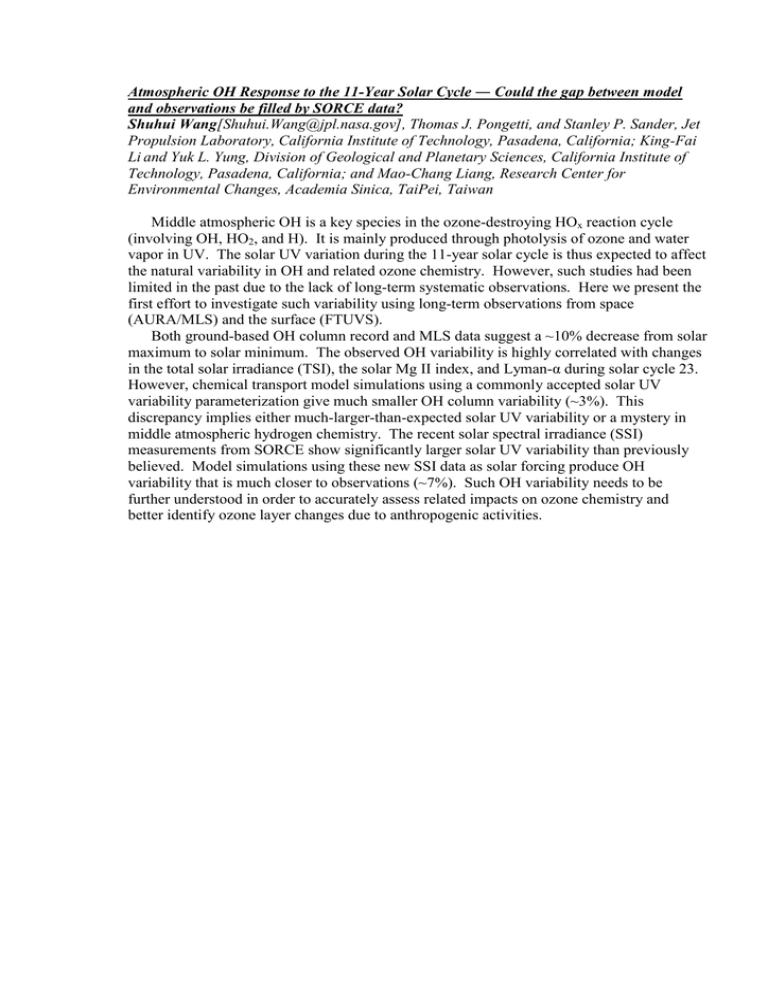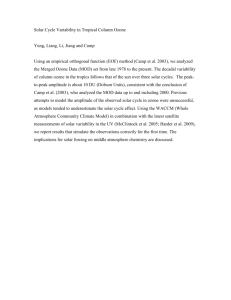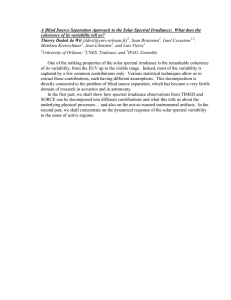Atmospheric OH Response to the 11-Year Solar Cycle ― Could... and observations be filled by SORCE data?
advertisement

Atmospheric OH Response to the 11-Year Solar Cycle ― Could the gap between model and observations be filled by SORCE data? Shuhui Wang[Shuhui.Wang@jpl.nasa.gov], Thomas J. Pongetti, and Stanley P. Sander, Jet Propulsion Laboratory, California Institute of Technology, Pasadena, California; King-Fai Li and Yuk L. Yung, Division of Geological and Planetary Sciences, California Institute of Technology, Pasadena, California; and Mao-Chang Liang, Research Center for Environmental Changes, Academia Sinica, TaiPei, Taiwan Middle atmospheric OH is a key species in the ozone-destroying HOx reaction cycle (involving OH, HO2, and H). It is mainly produced through photolysis of ozone and water vapor in UV. The solar UV variation during the 11-year solar cycle is thus expected to affect the natural variability in OH and related ozone chemistry. However, such studies had been limited in the past due to the lack of long-term systematic observations. Here we present the first effort to investigate such variability using long-term observations from space (AURA/MLS) and the surface (FTUVS). Both ground-based OH column record and MLS data suggest a ~10% decrease from solar maximum to solar minimum. The observed OH variability is highly correlated with changes in the total solar irradiance (TSI), the solar Mg II index, and Lyman-α during solar cycle 23. However, chemical transport model simulations using a commonly accepted solar UV variability parameterization give much smaller OH column variability (~3%). This discrepancy implies either much-larger-than-expected solar UV variability or a mystery in middle atmospheric hydrogen chemistry. The recent solar spectral irradiance (SSI) measurements from SORCE show significantly larger solar UV variability than previously believed. Model simulations using these new SSI data as solar forcing produce OH variability that is much closer to observations (~7%). Such OH variability needs to be further understood in order to accurately assess related impacts on ozone chemistry and better identify ozone layer changes due to anthropogenic activities.

